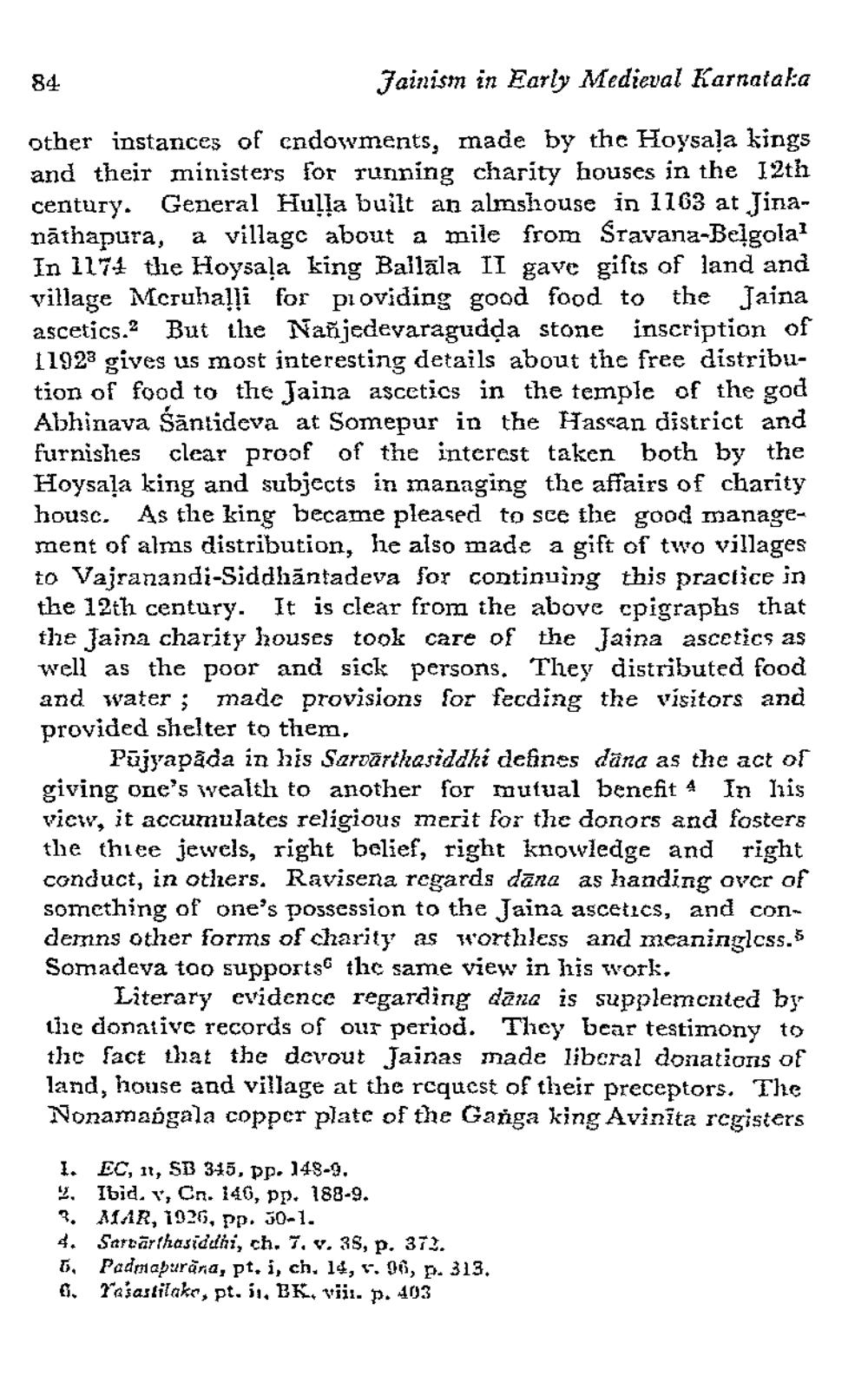________________
84
Jainism in Early Medieval Karnataka
other instances of cndowments, made by the Hoysala kings and their ministers for running charity houses in the 12th century. General Hulla built an almshouse in 1163 at Jinanāthapura, a village about a mile from Stavana-Belgola? In 1174 the Hoysaļa king Ballāla II gave gifts of land and village Mcruhaļļi for providing good food to the Jaina ascetics. But the Nañjedevaragudda stone inscription of 11923 gives us most interesting details about the free distribution of food to the Jaina ascetics in the temple of the god Abhinava Säntideva at Somepur in the Hassan district and furnishes clear proof of the interest taken both by the Hoysaļa king and subjects in managing the affairs of charity house. As the king became pleased to sce the good management of alms distribution, he also made a gift of two villages to Vajranandi-Siddhāntadeva for continuing this practice in the 12th century. It is clear from the above cpigraphs that the Jaina charity houses took care of the Jaina ascetics as well as the poor and sick persons. They distributed food and water ; made provisions for fecding the visitors and provided shelter to them,
Pūjyapıda in his Sardärthasiddhi defines dana as the act of giving one's wealth to another for mutual benefit 4 In his view, it accumulates religious merit for the donors and fosters the thice jewels, right belief, right knowledge and right conduct, in others. Ravisena regards dano as handing over of somcthing of one's possession to the Jaina ascetics, and condernns other forms of charity as worthless and meaningless. 5 Somadeva too supports the same view in his work,
Literary evidence regarding dana is supplemented by tire donative records of our period. They bear testimony to the fact that the devout Jainas made libcral donations of land, house and village at the request of their preceptors. The Nonamangala copper plate of the Ganga king Avinīta registers
1. EC, nt, SB 345, pp. 149-9. 2. Ibid. v, Cn. 146, pp. 188-9. 3. MAR, 1926, pp. 30-1. 4. Sartārthasiddhi, ch. 7. v. 39, p. 372. ū, Padmaburāna, pt. i, ch, 14, 5, 96, p. 313. 6. Tasastilake, pt.is, BK. viii. p. 403




